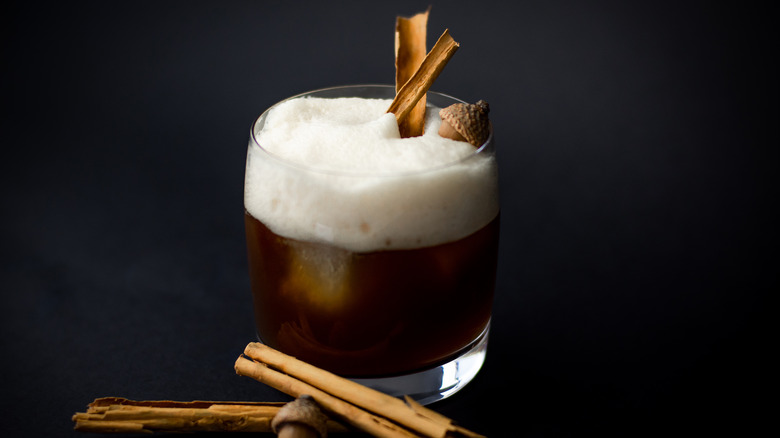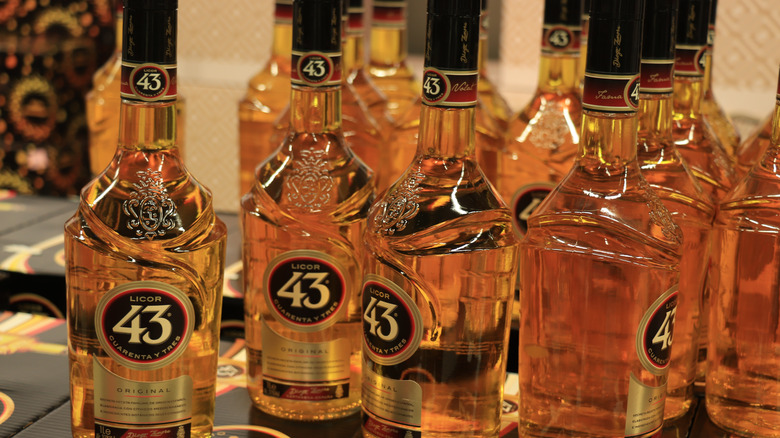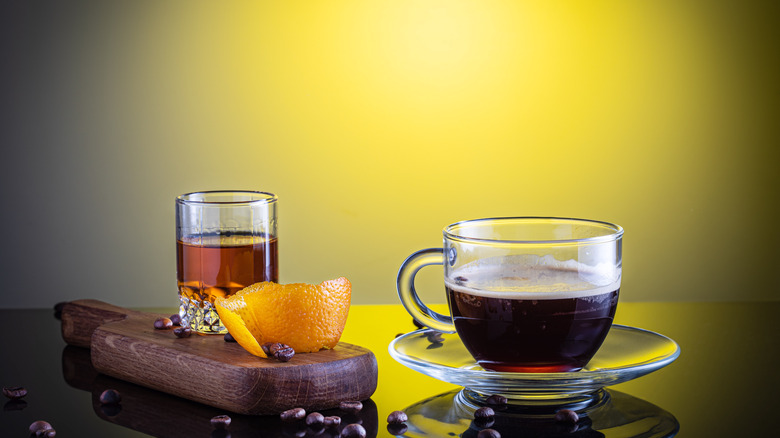What Type Of Liquor Is Traditionally Used For A Carajillo?
A centuries-old boozy Spanish coffee drink experienced a renaissance of sorts in the early aughts when millennials in Mexico City embraced it as a preferred after-dinner cocktail. The carajillo, a blend of hot coffee and rum or other hard liquor, originated in Spain, but where and when is shrouded in mystery.
One theory suggests that 19th-century workers employed to haul goods from one city to another would take quick breaks at roadside bars for a shot of spiked coffee. It's possible that Spanish owners of Cuban plantations used to serve indentured workers coffee mixed with rum to give them coraje (the Spanish word for courage) to get through their chores. And then, there's a theory that points to the Andalusian region of Spain where legend has it — locals would begin their mornings with the drink and shout, "Caraj!" the equivalent of "F*** it!" in English.
Whatever its provenance, the carajillo eventually arrived in Mexico along with Spanish settlers, where it morphed from a working-class beverage to the prime choice among the monied elite. But it wasn't until the introduction of a Spanish liqueur, Licor 43, in the mid-20th century that the carajillo became associated with a specific blend of coffee and liquor.
Licor 43 is the not-so-secret ingredient
By some accounts, the history of Licor 43 goes back more than 2,000 years to the Roman occupation of what is now Cartagena, Spain, where they encountered a delightful elixir known as liqvor mirabilis (marvelous liquid). The blend of fruits and herbs was so enticingly intoxicating that the Romans ordered Carthaginians to cease production, but they didn't. Instead, they carried on the tradition in a clandestine fashion, passing the secret recipe from generation to generation.
Fast forward to 1946. That's when the Zamora family of Cartagena decided to begin marketing their family's age-old secret recipe. They named their product Licor 43, a nod to the still-secret blend of 43 botanicals, spices, herbs, roots, and citrus. Within a few decades, Zamora was exporting Licor 43 to locations all over the world — including Mexico — where it took Mexico City by storm, ushering in a new generation of carajillo aficionados.
A carajillo can be ordered and made various ways
While the main ingredients in a Mexican carajillo are set in stone with coffee and Licor 43, preparations may vary. When ordering, it helps to know the two most common varieties. Order a carajillo "puesto," and you'll get black coffee with a shot of Licor 43 served in a glass over ice. Opt for "shakeado," and, you guessed it, the bartender will combine the ingredients in a cocktail shaker and blend them into frothy goodness before pouring the drink over ice.
And some establishments, like Cicatriz in Mexico City, puts its spin on the classic cocktail by adding a few extras in the form of brandy and cream. "It's basically a melted milkshake," Cicatriz owner Jake Lindeman told Punch in 2018.
Or, if you like the comfort of your home, you can stick with Zamora's original carajillo recipe. You'll need 1¾ ounces of Licor 43, hot espresso coffee, and ice cubes. For a shaken version, combine all ingredients in a cocktail shaker, blend, and strain over ice. If you prefer a stirred cocktail, fill a glass halfway with ice cubes and add Licor 43. Serve with a cup of hot espresso, and invite your guests to pour the coffee over the liqueur and stir before drinking.


